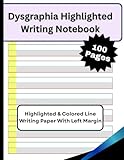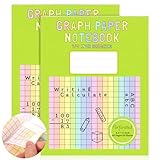Best Ways to Teach a Child with Dyslexia Handwriting Easily
Teaching A Child with Dysgraphia or Dyslexia Handwriting
If your child has dysgraphia or dyslexia, you know teaching your child to write legibly is difficult. When a child has dyslexia handwriting is a challenge!
Even when your child works hard learning handwriting, progress can seem minimal.
Writing a readable composition is affected by two components:
One is handwriting and the other is the organization and planning of good writing.
Dysgraphia: Handwriting workbook for kids. Tracing tasks, writing exercices, spelling words, missing letters, counting syllables, and crosswords. (Dysgraphia Books Collection)
$10.97 (as of 19 November 2025 17:14 GMT -05:00 - More infoProduct prices and availability are accurate as of the date/time indicated and are subject to change. Any price and availability information displayed on [relevant Amazon Site(s), as applicable] at the time of purchase will apply to the purchase of this product.)If your child has difficulty in either handwriting or organizing the writing, he will have difficulty writing. This is true even when your child is writing short stories or compositions.
If your child’s difficulty is with learning handwriting, he may have difficulty with visual-motor integration, fine motor skills, etc. This page will focus on methods and curriculum for children who have difficulty with the physical task of learning handwriting.
First, let’s talk briefly about dysgraphia causing difficulty with organization skills and planning. When writing is badly spaced and sized, there can be a problem area like a deficit in executive functioning disorder. Executive functioning affects organization skills, sequencing, planning, etc.
If your child needs help with the content of his writing, then it will be helpful for you to refer to the Recommended composition writing curriculum for homeschooling children with learning disabilities.
Teaching a child with dyslexia handwriting and Helping Them More Effectively
Children with dysgraphia often hate writing by time they are diagnosed. Because of this, it is often a good idea to separate writing essays from learning handwriting. Find other fun ways of working on writing skills without actually having your child handwriting the essay. Let your child dictate to you, record an essay in a digital recorder, or use other assistive technology for dysgraphia.
In order to work on your child’s physical skills, starting with large format maze puzzles can be more fun than actually learning handwriting. If you start with large formats, your child can see how to get through the maze easily. Slowly move towards smaller, more difficult and complex mazes. This will help your child make progress in the skill areas necessary for handwriting without forcing the issue of learning handwriting. Most kids don’t even know working mazes is a way of working on learning handwriting!
Given your child’s needs to learn fine muscle control, using a pen or pencil to work through mazes can give your child lots of practice in a fun format. This type of practice is almost always more effective for kids who “hate to write”.
FUN Ways for Kids with Dyslexia or Dysgraphia to Build Handwriting Skills
To build handwriting dexterity, I recommend starting with books like these
Simple Maze puzzle books For Kids.
As your child’s ability to use a pencil improves, you may want to switch to books that provide more precise practice like these:
Maze Books for Kids.
168 Pages Maze Books for Kids Ages 3-8, 6-Pack - Beginner Level Busy Books - Outer Space Theme Children's Amazing Mazes Fun Games Birthday Gifts
$10.99 (as of 19 November 2025 17:07 GMT -05:00 - More infoProduct prices and availability are accurate as of the date/time indicated and are subject to change. Any price and availability information displayed on [relevant Amazon Site(s), as applicable] at the time of purchase will apply to the purchase of this product.)Another method for learning handwriting skills is through Multisensory activities. Handwriting with soap on a large flat pan, with a finger on velvet, with gross body movements with a large chalkboard, in a sand tray, etc. are all fun ways for learning handwriting.
If you have your child work on drawing in a pan with his finger, you can work on spelling through multi-sensory activities at the same time. You can help with both handwriting and spelling simultaneously.
Try to think of creative ways to let your child “play” with his school work. Building fun into learning handwriting will make the task of overcoming LD issues more rewarding along the way.
Learning Handwriting Separately from Writing
For any child with dysgraphia, learning handwriting and composition is very effortful. It takes a lot of brain processing to hold a written composition in your mind while figuring out what you want to say, organizing it, recalling the spelling, and writing each word, word-by-word, until you get the whole composition placed beautifully on a piece of paper.
For a child who has dysgraphia, there are often difficulties with working memory, phonemic awareness, graphomotor abilities, or other critical skills. Therefore, expecting great handwriting in written compositions is often unrealistic.
For best results, separating learning handwriting completely from writing compositions (written expression) usually enables the child to have better outcomes in each task. Using keyboarding, copying tasks, or a handwriting program is usually the best option for improving a child’s ability to get his thoughts onto paper in a legible fashion.
Written expression, or composition writing, should be addressed totally separately from learning handwriting. Check out the Written Expression Woes and What To Do About Them page for ideas about teaching written expression to a child with dysgraphia or handwriting difficulties.
Dyslexia Handwriting Programs for Kids Who Struggle
Handwriting for Kids
**Handwriting for Kids – This website provides printable guides for children learning to print or write cursive. The handwriting practice materials at this site are ‘traditional’ and not designed specifically for a child with learning disabilities. If you are looking for an inexpensive handwriting curriculum, this site is a great resource. However, it does not provide materials specific to teaching a child who is having difficulty with letter and number formation.
Tracing and Copybooks for Kids
**Tracing and Copybooks for Kids – These types of books provide visual and guided strategies for teaching your child with dyslexia handwriting. The books are well-suited for kids who have difficulty with their grapho-motor (handwriting) skills. Children can trace their way to learning letter writing. This is a great way to allow your child to have fun while learning to write.
Handwriting Without Tears
**Handwriting Without Tears – This is the main program we used in the beginning. With this program, my child who HATES writing said that Cursive Writing was his favorite subject! Handwriting Without Tears is simple and very easy to follow. The directions are clear and the children can easily determine what to do. Handwriting Without Tears is successful because it simplifies learning handwriting. It builds on basic pencil strokes in order to form letters, and the program keeps the writing style simple.
Getty-Dubay® Italic Handwriting Series
Italic Handwriting Series Book D
**Getty-Dubay® Italic Handwriting Series – We used this program as well. The Handwriting Without Tears program was great for getting started, but didn’t provide enough practice to actually overcome the issues with grapho-motor difficulties. The Italic series is easy to use because the letter formation is relatively simple (without much in the way of ornate decorative elements). It is easier for a child with dyslexia handwriting difficulties to copy the letters than it is with some forms of handwriting that are more ornate.
Edublox
**Edublox – This is a program that addresses some of the underlying issues that contribute to dysgraphia. While this is not a program for learning handwriting, many of the skill deficits addressed through the program can help make a child’s writing more legible. This program will help with sequential planning (as needed in spelling), letter size, letter spacing, focus, etc.
You may want to check out these Free Downloadable Workbooks:
Spelling for Writing Workbooks – Downloadable from https://eric.ed.gov/ by entering the document number into the search box.
These workbooks begin with teaching a child with dyslexia handwriting in conjunction with simple spelling exercises.
Spelling for Writing: Student Activity Book. Level 1. (ED451543) – document number ED451543
Spelling for Writing: Student Activity Book. Level 2. (ED451545) – document number ED451545
Spelling for Writing: Student Activity Book. Level 3. (ED451547) – document number ED451547
Spelling for Writing: Student Activity Book. Level 4. (ED451548) – document number ED451548
Spelling for Writing: Student Activity Book. Level 5. (ED451549) – document number ED451549
ED451542 – Spelling for Writing: A Guidebook for Parents and Teachers. Level 1. (ED451542)
ED451544 – Spelling for Writing: A Guidebook for Parents and Teachers. Level 2. (ED451544)
ED451546 – Spelling for Writing: A Guidebook for Parents and Teachers. Level 3. (ED451546)
ED448460 – Spelling for Writing: Instructional Strategies. (ED448460)










